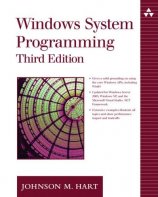Code-Beispiel
Komplexe Zahlen
| Lizenz: | Erster Autor: | Letzte Bearbeitung: |
| GPL |  nemored nemored |  15.09.2007 15.09.2007 |
In der Physik und angewandten Mathematik lassen sich viele Berechnungen mit Hilfe der komplexen Zahlen einfacher ausführen. Der unten stehende Code stellt einige Funktionen zum Rechnen mit komplexen Zahlen zur Verfügung. Die Zahlen können dabei in der algebraischen Form oder in der Polarform angesprochen werden.
type complex
as double real, imag ' Real- und Imaginaerteil
as double abs, arg ' Betrag und Argument
end type
declare function newCartesian(byval real as double, byval imag as double) as complex
declare function newPolar(byval abs as double, byval arg as double) as complex
declare function complexAdd(byval c1 as complex, byval c2 as complex) as complex
declare function complexSub(byval c1 as complex, byval c2 as complex) as complex
declare function complexMult(byval c1 as complex, byval c2 as complex) as complex
declare function complexDiv(byval c1 as complex, byval c2 as complex) as complex
declare function complexConj(byval c as complex) as complex
declare function complexReci(byval c as complex) as complex
declare sub polar2cartesian(byref c as complex)
declare sub cartesian2polar(byref c as complex)
declare function strCartesian overload (byval c as complex) as string
declare function strCartesian(byval c as complex, byval p as ubyte) as string
declare function strPolar overload (byval c as complex) as string
declare function strPolar(byval c as complex, byval p as ubyte) as string
function newCartesian(byval real as double, byval imag as double) as complex
' neue komplexe Zahl anhand von Real- und Imaginaerteil definieren
dim as complex ret
ret.real = real
ret.imag = imag
cartesian2polar(ret)
return ret
end function
function newPolar(byval r as double, byval phi as double) as complex
' neue komplexe Zahl anhand der Polarkoordinaten definieren
dim as complex ret
ret.abs = r
ret.arg = phi
polar2cartesian(ret)
return ret
end function
function complexAdd(byval c1 as complex, byval c2 as complex) as complex
' addiert zwei komplexe Zahlen
dim as complex ret
ret.real = c1.real + c2.real
ret.imag = c1.imag + c2.imag
cartesian2polar(ret)
return ret
end function
function complexSub(byval c1 as complex, byval c2 as complex) as complex
' subtrahiert zwei komplexe Zahlen
dim as complex ret
ret.real = c1.real - c2.real
ret.imag = c1.imag - c2.imag
cartesian2polar(ret)
return ret
end function
function complexMult(byval c1 as complex, byval c2 as complex) as complex
' multipliziert zwei komplexe Zahlen
dim as complex ret
ret.abs = c1.abs * c2.abs
ret.arg = c1.arg + c2.arg
polar2cartesian(ret)
return ret
end function
function complexDiv(byval c1 as complex, byval c2 as complex) as complex
' dividiert zwei komplexe Zahlen
dim as complex ret
ret.abs = c1.abs / c2.abs
ret.arg = c1.arg - c2.arg
polar2cartesian(ret)
return ret
end function
function complexConj(byval c as complex) as complex
' bildet die konjugiert komplexe Zahl
dim as complex ret
ret = newCartesian(c.real, -c.imag)
cartesian2polar(ret)
return ret
end function
function complexReci(byval c as complex) as complex
dim ret as complex
if c.real=0 and c.imag=0 then
ret = newCartesian(0, 0)
else
ret = newCartesian(c.real/c.abs^2, -c.imag/c.abs^2)
end if
cartesian2polar(ret)
return ret
end function
sub polar2cartesian(byref c as complex)
' ermittelt Real- und Imaginaerteil, wenn die Polarkoordinaten bekannt sind
dim as complex ret
c.real = c.abs * cos(c.arg)
c.imag = c.abs * sin(c.arg)
end sub
sub cartesian2polar(byref c as complex)
' ermittelt die Polarkoordinaten, wenn Real- und Imaginaerteil bekannt sind
dim as complex ret
c.abs = sqr(c.real^2 + c.imag^2)
if c.abs = 0 then
c.arg = -1
elseif c.imag >= 0 then
c.arg = acos(c.real/c.abs)
else
c.arg = -acos(c.real/c.abs)
end if
end sub
function strCartesian(byval c as complex) as string
return strCartesian(c, 8)
end function
function strCartesian(byval c as complex, byval p as ubyte) as string
' gibt die komplexe Zahl in der Form a+bi zurueck (gerundet auf p Stellen)
dim as string ret
ret = str(int(c.real*10^p+.5)/10^p)
if c.imag > 0 then ret += "+"
if c.imag <> 0 then ret += str(int(c.imag*10^p+.5)/10^p) + "i"
return ret
end function
function strPolar(byval c as complex) as string
return strPolar(c, 8)
end function
function strPolar(byval c as complex, byval p as ubyte) as string
' gibt die komplexe Zahl in der Form rE(phi) zurueck
dim as string ret
ret = str(int(c.abs*10^p+.5)/10^p)
if c.arg<>0 and c.abs<>0 then ret += "E(" + str(int(c.arg*10^p+.5)/10^p) + ")"
return ret
end function
Einfache Rechenbeispiele:
dim as complex c, d
c = newCartesian(5, 7) ' c = 5 + 7i
d = newCartesian(3, -4) ' d = 2 - 4i
' Addition; Ausgabe in algebraischer Form
print strCartesian(c); " + "; strCartesian(d);
print " = "; strCartesian(complexAdd(c, d))
' Multiplikation; Ausgabe in Polarform (4 Nachkommastellen)
print strPolar(c, 4); " * "; strPolar(d, 4);
print " = "; strPolar(complexMult(c, d), 4)
'reziproker Wert
print "1 / ("; strCartesian(d);
print ") = "; strCartesian(complexReci(d))
sleep
| Zusätzliche Informationen und Funktionen | |||||||
|---|---|---|---|---|---|---|---|
|
|||||||



 FreeBASIC-Nachrichten jetzt auch über Twitter erhalten. Follow us!
FreeBASIC-Nachrichten jetzt auch über Twitter erhalten. Follow us! Bearbeiten
Bearbeiten Versionen
Versionen